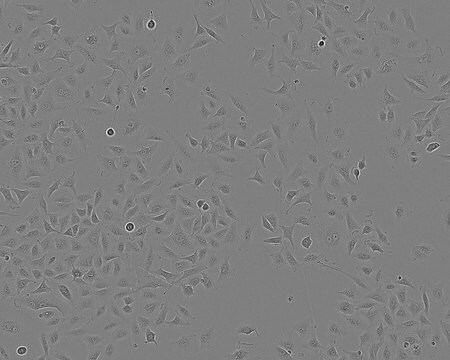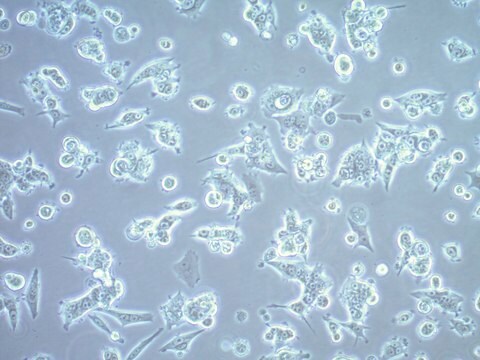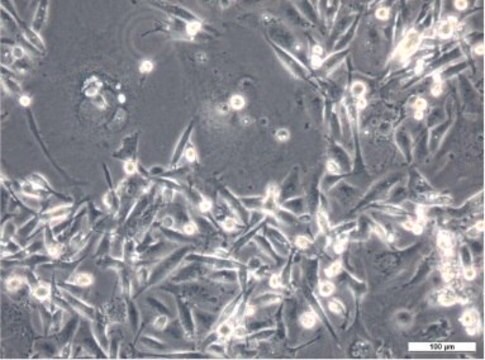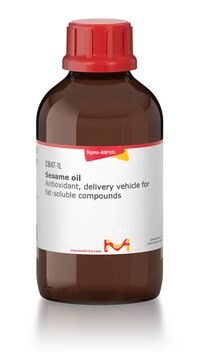SCC100
MCF-7/S0.5 Human Breast Cancer Cell Line
Human
Synonym(s):
MCF7 S0.5
Human breast cancer cell line
About This Item
Recommended Products
Product Name
MCF-7/S0.5 Human Breast Cancer Cell Line, MCF-7/S0.5 is a tamoxifen-sensitive cell line established from the MCF-7 human breast cancer cell line by adaption to growth in low serum conditions.
biological source
human
Quality Level
technique(s)
cell culture | mammalian: suitable
shipped in
ambient
General description
The presence of hormones in the serum required in tissue culture media complicates the demonstration of specific hormone and antihormone effects. The MCF-7/S0.5 human breast cancer cells have been adapted to long-term growth in low serum concentration (0.5% fetal bovine serum) by a stepwise reduction of the medium serum content from 5% to 0.5% FBS. MCF-7/S0.5 cells express both estrogen and progesterone receptors and are sensitive to tamoxifen.
Cell Line Description
Application
Quality
• Cells are tested by PCR and are negative for HPV-16, HPV-18, Hepatitis A, B, C and HIV-1 & 2 viruses.
• Cells are negative for mycoplasma contamination.
• Each lot of cells are genotyped by STR analysis to verify the unique identity of the cell line.
Storage and Stability
Other Notes
Disclaimer
Storage Class Code
10 - Combustible liquids
WGK
WGK 1
Flash Point(F)
188.6 °F - closed cup - (Dimethylsulfoxide)
Flash Point(C)
87 °C - closed cup - (Dimethylsulfoxide)
Certificates of Analysis (COA)
Search for Certificates of Analysis (COA) by entering the products Lot/Batch Number. Lot and Batch Numbers can be found on a product’s label following the words ‘Lot’ or ‘Batch’.
Already Own This Product?
Find documentation for the products that you have recently purchased in the Document Library.
Our team of scientists has experience in all areas of research including Life Science, Material Science, Chemical Synthesis, Chromatography, Analytical and many others.
Contact Technical Service







